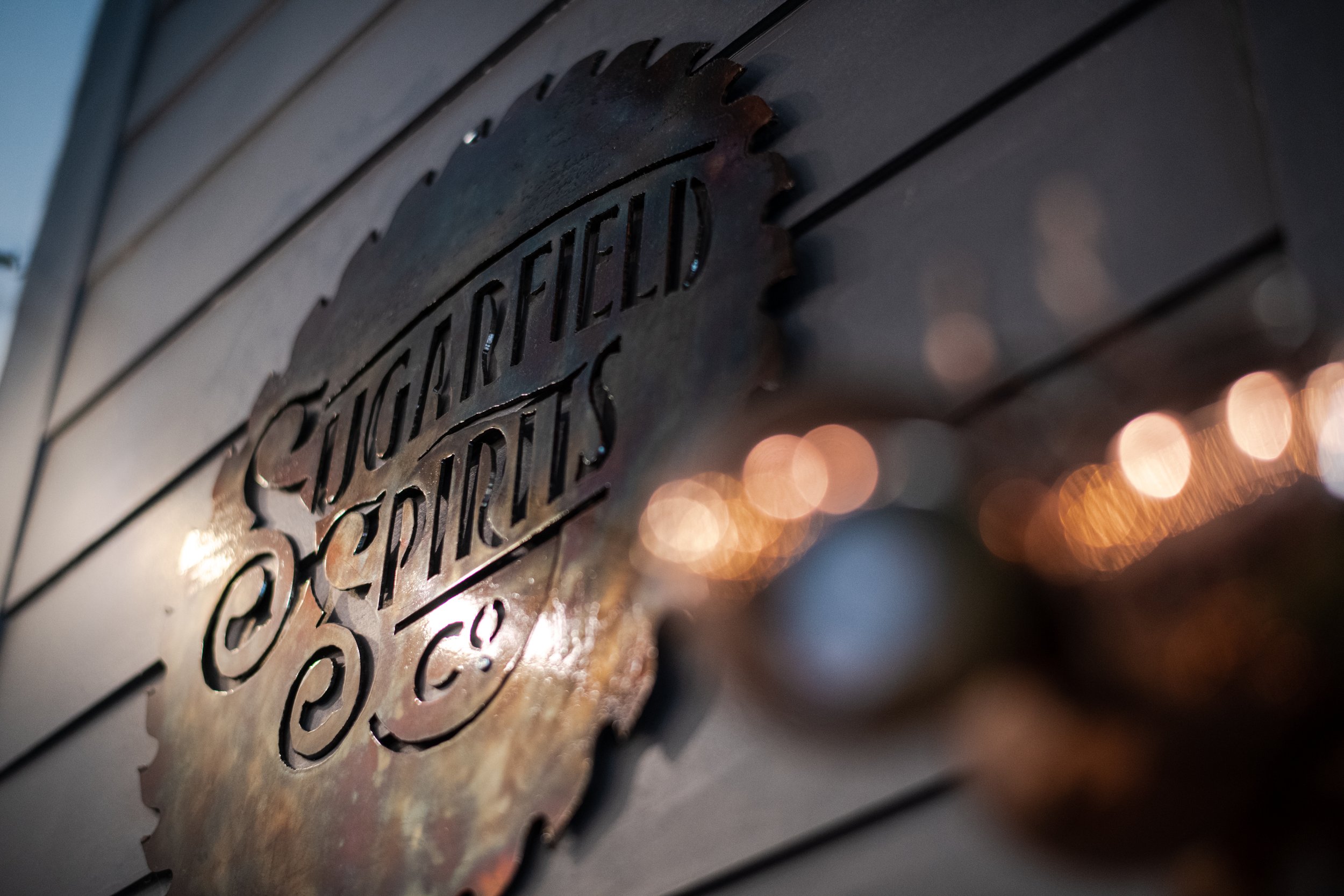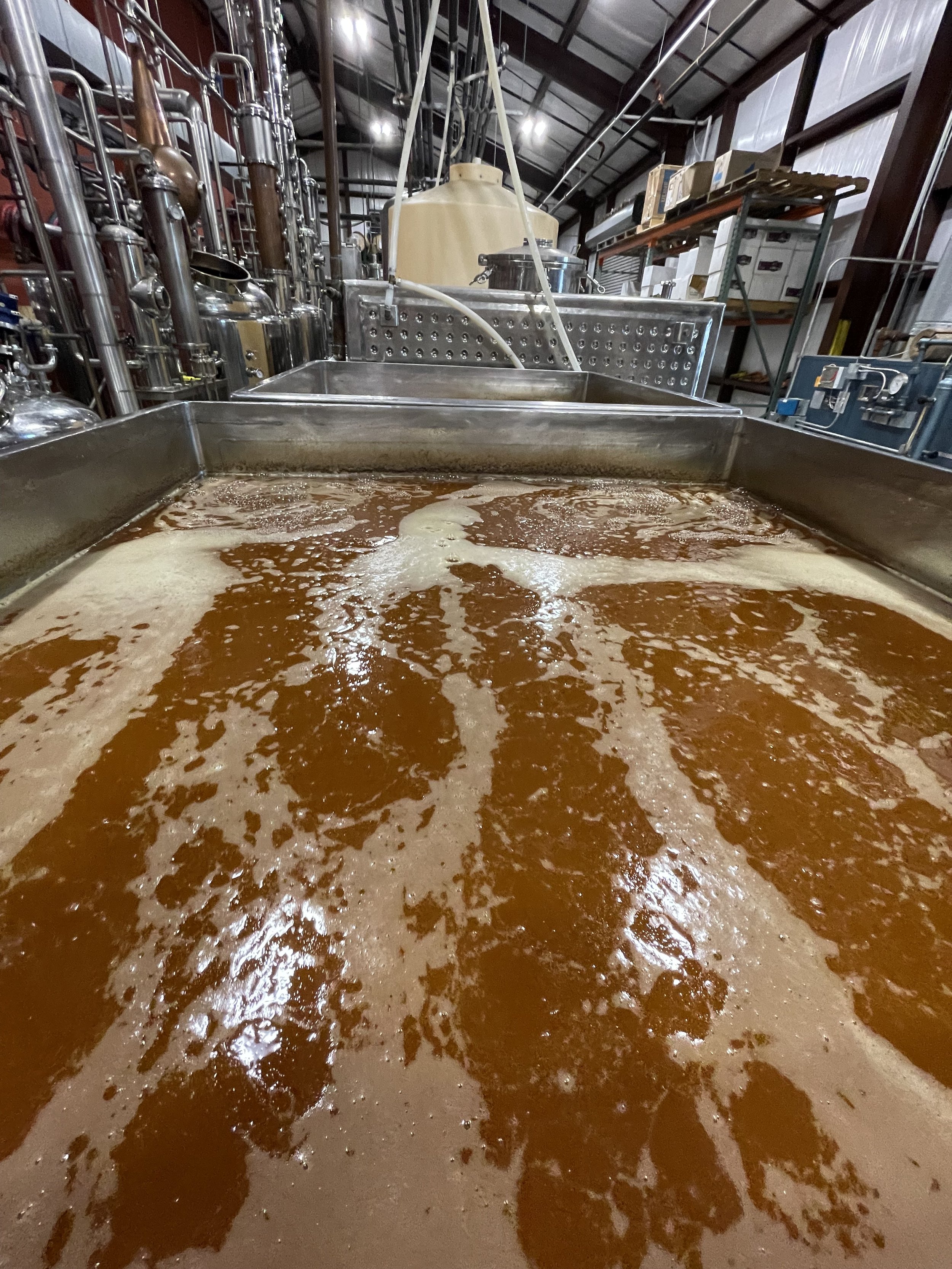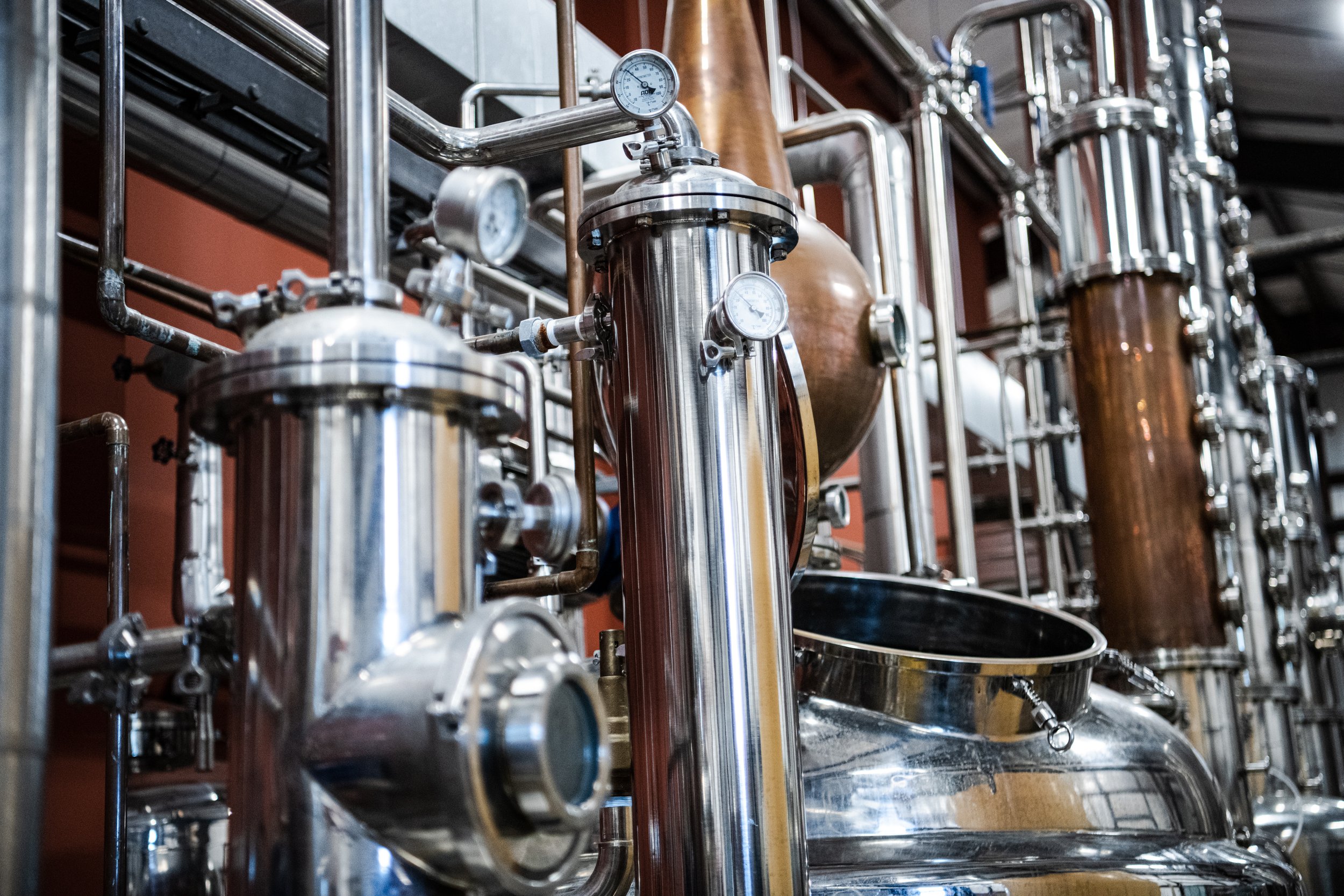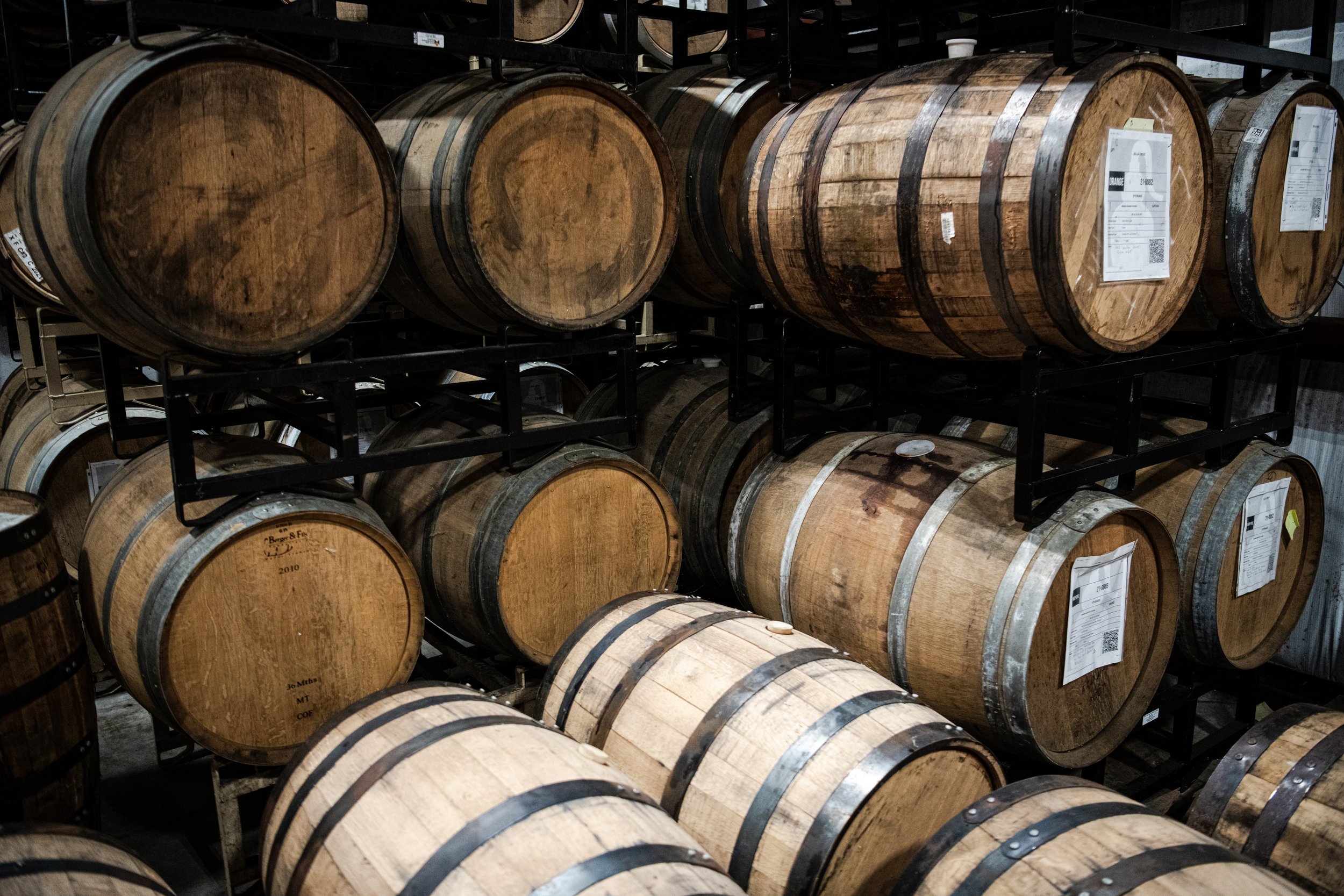Sugarfield Spirits: Another Louisiana Rum Producer Worth Watching
It’s rare to have a conversation about American rum these days that fails to mention Louisiana.
The state’s abundant supply of sugarcane has not only made it a go-to source of molasses and unrefined sugar for rum makers across the country, it’s also attracted a high concentration of serious rum makers who have direct access to every byproduct of the plant—including fresh juice.
“The most interesting things right now in American rum are happening in Louisiana,” my co-host John Gulla remarked on our recent Rumcast episode devoted to American rum. I won’t disagree with anyone who shares his view.
You likely already know about some of those interesting things. I wrote a piece on Porchjam Distillery’s Cheramie Rum last year. Distilleries like Roulaison and Oxbow have gotten a good deal of press over the years (relative to other American rum producers). Bayou has rapidly grown its market presence throughout the U.S. and even in some export markets.
But Sugarfield Spirits is one of the Louisiana rum makers that has managed to stay under the radar of enthusiasts, despite a history of interesting releases since opening in 2019. I still remember seeing the following label for their first cane juice rum release in 2020 and instantly knowing that rum nerds had to be behind it:
GPS coordinates of the sugarcane plot? Brix level? Fermentation and distillation details? This is the kind of stuff you put on your label when you’ve been paying attention to the enthusiast community’s thirst for transparency.
But it wasn’t until recently that I finally had the chance to taste Sugarfield’s rums.
Sugarfield owner and distiller Thomas Soltau sent me a handful of bottles and samples that gave me a sense of the distillery’s style and breadth of rum offerings. The lineup included everything from unaged cane juice rum from the latest harvest, to a version of 2020’s Experimental Batch #2 that spent three years in a white Port barrel, to a one-year queen’s share cane juice rum. What I tasted confirmed that there is something here worth watching.
The unaged rum brings crisp green apples, honeydew melon, lime peel, and olive brine on the nose. The palate delivers something simpler and subtler, and it’s so feathery soft I’m shocked the rum is 120 proof. All in all, it’s an approachable introduction to cane juice rum for a local market that—despite being surrounded by sugarcane—has tasted little of it.
The aged rums are a different animal. At first glance, the dark color may have you wondering if Sugarfield uses smaller sized barrels to impart the characteristics of aging faster. It’s a choice many young craft distilleries make, but 53-gallon barrels (or larger in the case of the distillery’s Port and Cognac casks) are the standard at Sugarfield. The mahogany of the three-year rum is a reminder that Louisiana makes for an intense aging climate where it doesn’t take long to squeeze quite a bit of character out of a cask. Even the one-year queen’s share rum already tastes more mature than I expected.
The effectiveness of the Port influence will be in the eye of the beholder. For some, it may be a tad much. Others will love the richness it brings to such a young spirit. Like the unaged rum, it’s an approachable introduction to the style that cloaks the cane’s offbeat flavors in layers of fruit and oak spice from the heavy barrel influence.
After tasting, I caught up with Thomas to get all the details on Sugarfield’s approach to rum making and what we can expect to see from them in the coming years. I’ve included my questions and his answers below, edited for length and clarity.
What led you to start a distillery in the first place, and how did you settle on rum?
It’s a long story and it has been an evolution. As you ask in a follow up question, I am an intensive care doctor for newborn babies. I am super passionate about the care I provide for babies and will probably practice at least part time for a long time. However, I wasn’t always sure I wanted to be a doctor. I probably would not have applied to medical school a second time if I had not gotten in. I did my undergraduate degree at the Georgia Institute of Technology, ending up with a BS degree in Microbiology, but bounced around a little before I graduated.
At some point in this journey I really thought about a career in winemaking, and I still very much have the mentality of a winemaker. I evolved into making spirits, and then found that my skill set, location, and equipment were best used for rum making. Then, because I was bored I guess, we opened a winery and cidery back in the fall of 2022. So it's come full circle.
Rum is the natural spirit to be concentrating on in south Louisiana. Louisiana is typically the highest producing sugar state in the country and our parish (we have parishes instead of counties in LA) is in the heart of the sugarcane producing area. I think all the distilleries in south Louisiana should at least be offering rum, if not concentrating on it.
The first release I ever noticed from Sugarfield was a cane juice rum. If I recall correctly, you sourced the cane locally and then crushed it by hand at your distillery. What made you gravitate toward doing a release with fresh juice, which I know is a lot more work than using molasses?
We cut the cane by hand from one of my nurse practitioners' family fields. We crushed it on our small mill at the distillery and then fermented and double distilled at the distillery. This was a tremendous amount of work. I think we did about 200 bottles unaged from this release and then one barrel. We just released the barreled version after three years in a white Port barrel.
Certainly the way we were making cane juice to begin with was a lot of work. We are continuing to work on our protocols and have improved that process a lot. We love cane juice rum at the distillery and we certainly wanted to have that as a component of our spirit repertoire.
Since then, you’ve moved away from crushing cane yourself, but you’re still doing some cane juice rum releases on a limited basis. How are you sourcing that juice? Can you walk us through the process of how you make your cane juice rums (from sourcing through distillation)?
We get fresh, unheated cane juice from a local area mill. It is muddy juice off the first press. We drive directly from the mill back to the distillery. As soon as we get to the distillery we pitch hydrated yeast. Starting brix is around 16-19.
After fermentation completes (3-4 days) we distill in our 600 gallon still. We do a first pass stripping run with a small heads cut and then collect the remainder. We redistill the raw stripping runs in a finishing run through our pot still combined with a 4 plate column. Proof after the stripping run is around 100, proof after the finishing run (3-4 stripping runs combined) is about 160.
This past year we kept our early season and late seasons batches separate and blended a barrel of the two. Very different spirits.
How does your production process differ for non-cane juice rums?
Our production process is similar between the different rums. Basic variables between the spirits include the yeast we use (we have used 8 different yeasts at the distillery for rum, have now settled primarily on 2 different ones) and the proof off the still on the finishing run. We tend to run our 100% molasses and cane juice with a little less reflux and a little more steam. For our lighter rums we use a little more reflux so it comes off the still a little higher proof and a little cleaner.
Why have you chosen to continue with multiple types of rum (cane juice and molasses/sugar) rather than focusing on just one?
Louisiana cane season runs from September/October through December/January. So our concentration during the fall is going to shift to almost exclusively cane juice. Even if we just do stripping runs during the fall and do finishing runs in January, we still have a lot of time when our equipment isn’t used. As someone who loves rum in general and has great raw products available to make different styles year round, I think it makes sense to be a rum distillery in general, not just a cane juice distillery.
Cane juice rum, particularly when unaged, has a pretty unfamiliar profile to the average American palate. What have you found to be the best ways to introduce it to people?
I have a couple of different strategies. One is for a local person with no cane juice rum experience. They know sugarcane production, they know the taste and smell of sugarcane, and they grew up driving behind the thousands of cane trucks all over the area. We sell to them based on the local aspect, that this smells like the harvest.
Second is the rum aficionado. They understand Agricole. We emphasize that we respect the traditions of Martinique, Guadeloupe, and Brazil. We are intentionally not calling our product Agricole. We then discuss how ours is a different style and spirit, and that we are really emphasizing barrel strategies.
The final strategy is to someone not from the area without experience in Agricole. We discuss how typical rum notes like butterscotch and caramel are made during the sugar production process and that cane juice rum often doesn’t have that character. We discuss the agricultural nature and I often talk about tequila as a product that shares some common character with cane juice rum. We discuss the grassiness and herbal qualities of the product, especially when unaged. We talk about the differences in how it matches up with cocktails. A rum punch with cane juice unaged is super delicious.
Let’s talk about your aging program. I know you have a plethora of cask types, including multiple types of Port barrels. What types of casks have you experimented with so far, and which ones do you think are bringing out the best in your rums?
We have a myriad of barrels and spirits aging in the back, varying from 100% molasses to 100% cane sugar. We are settling into a seasonality to our spirits — molasses in the summer, cane juice in the fall, and sugar, sugar/molasses blends in the cooler months here.
The barrels include new charred oak, used bourbon, used red/white Port, Madeira, Cognac, and orange liqueur barrels. We plan for our aged rums to always be blends and vary from batch to batch.
My mother is an artist and I did not get any of her ability to draw, but that doesnt mean I am not really artistic. To me, a blend of a spirit is an art form. I am hoping that all of these barrels will be colors that I can paint with as they come to maturity.
I really love Port barrels with rum. I feel the French oak really brings out interesting character. The Port also imparts some interesting notes. There is something about French oak and rum that marries well.
What kinds of aged releases do you have coming down the pipeline that people can watch out for?
We have a bunch of barrel aged rums approaching three years old. To me in this climate, three years is starting to get to maturity for 100% molasses rum. Our climate at the distillery is as follows: nine feet elevation, hot as Hades seven months a year, variably hot or pleasant the other five months, high humidity year round. We get a little colder than the Caribbean, but not a lot. This year we got down to low 20s F one week in December, then had a couple of other light freezes in January, then one more in March. I think these hot/cold cycles help with the barrel aging process.
I would like to get some four- to five-year releases out in the coming years. I think cane juice at three years is also reaching maturity. It often loses the cane juice flavors and starts to just taste like a barreled spirit when it’s older than that. I hope to get an older aged rum and a cane juice rum into distribution in the next year or two.
From what I’ve heard, being a distillery owner is not an easy job. On top of that, you’re also an intensive care doctor — which also does not sound like an easy job! How do you balance the two?
Not well??
I have a fabulous job taking care of sick newborns. I work five to six 24-hour shifts a month, which comes to about 30 hours a week. I stepped back from full time work in 2022. After I have worked an overnight shift, I will do something easy that doesn’t involve math the next day. A stripping run or bottling are my typical choices. That leaves me about 18-19 days a month to dedicate in the distillery.
I have a very understanding family and fabulous friends. My wife makes sure I eat. She is the other main production person at the distillery and is such a vital part of all we do. My friends come and help bottle and distill. My sister and brother work with me and are also a vital part of all this. I couldn’t do it without them.
There’s a lot of interesting rum coming out of Louisiana these days. Do you think there’s anything that could currently be described as a “Louisiana style” of rum, or do you think it’ll take some more time for that to develop? If so, what do you think it will look like?
There are about eight of us in the state really concentrating on rum now. The Louisiana craft distilling scene is still really young, so we haven’t completely found our style yet. I think cane juice is going to be a part of this style. But we are blessed with an abundant source of raw cane products in the state. I’ve found that more and more distilleries are spreading themselves across the spectrum of rum.
We have such an abundance of cane here, Louisiana should be the epicenter of American rum. I think we are on our way to making our own style.
Other than your own rum, what’s an interesting rum you tried recently that left an impression on you?
I’m a Foursquare fan boy. They say imitation is the sincerest form of flattery, and if you can’t tell from my barrel program, playing around with barrels seems to be what I am planning. Foursquare Sagacity aged in Madeira and bourbon casks is something I hope to one day emulate. I also really loved Indelible in bourbon and Zinfandel barrels. We should have some empty wine barrels from our winery real soon…
If you'd like to get more info on Sugarfield Spirits, you can check out their website here.





